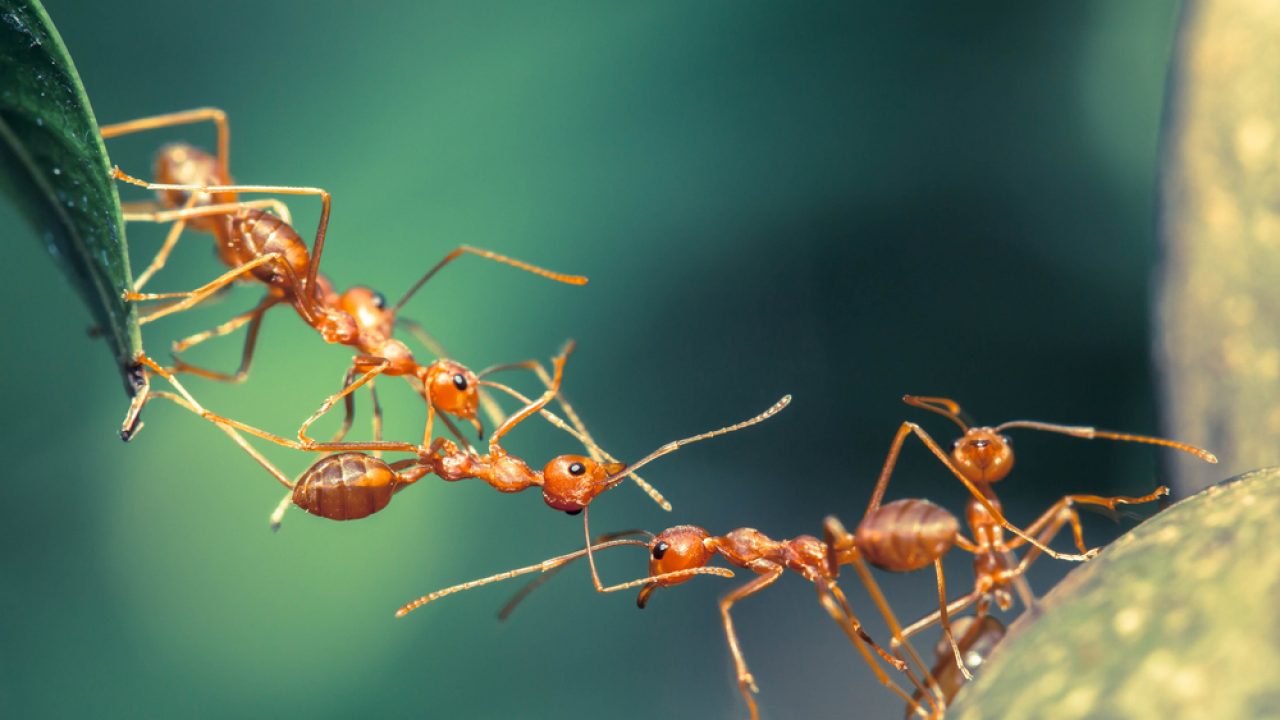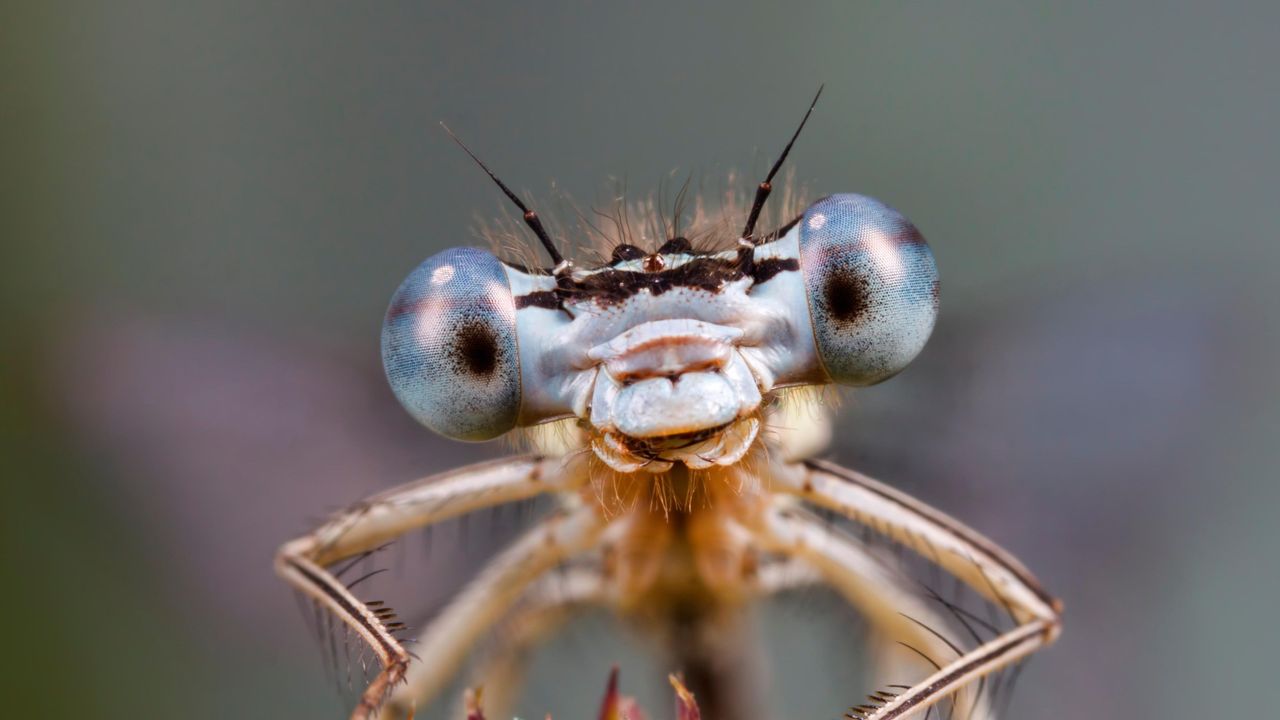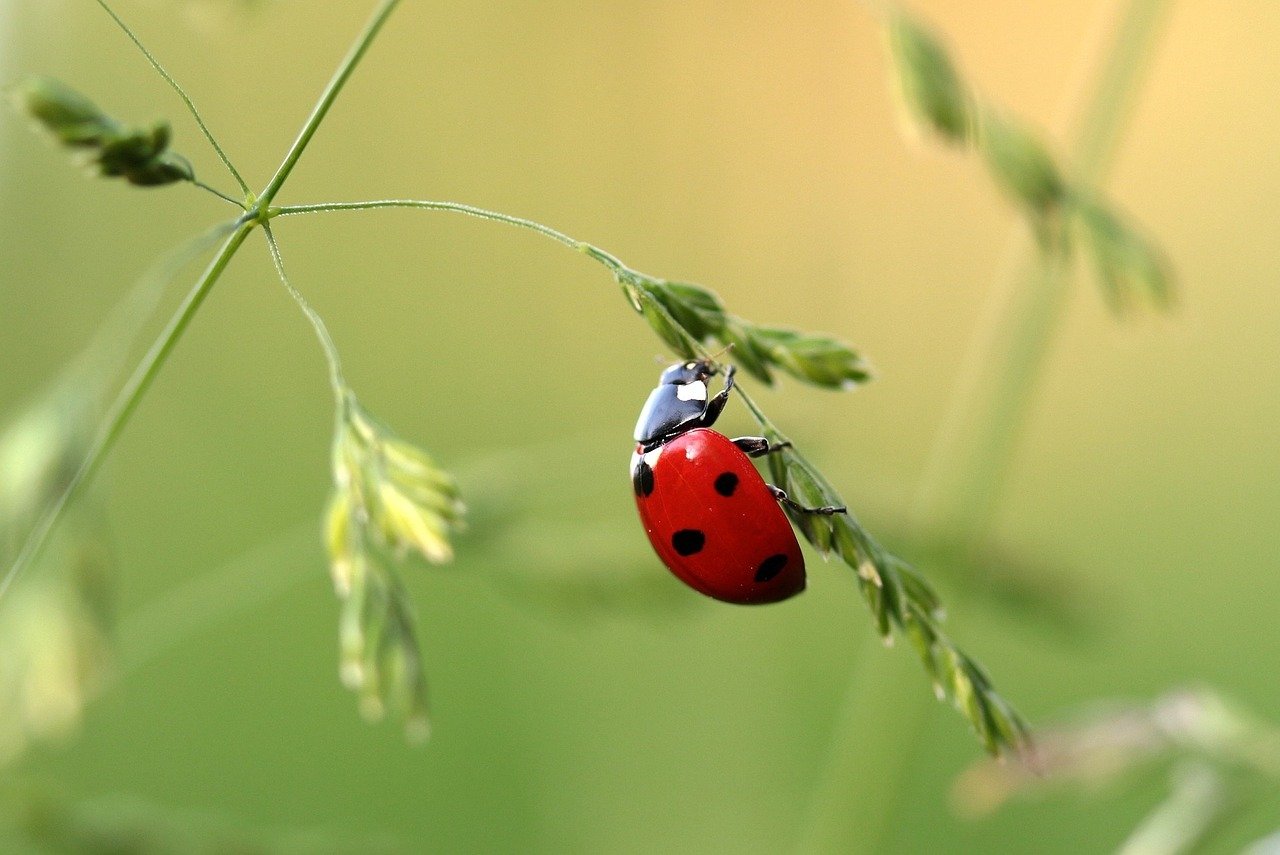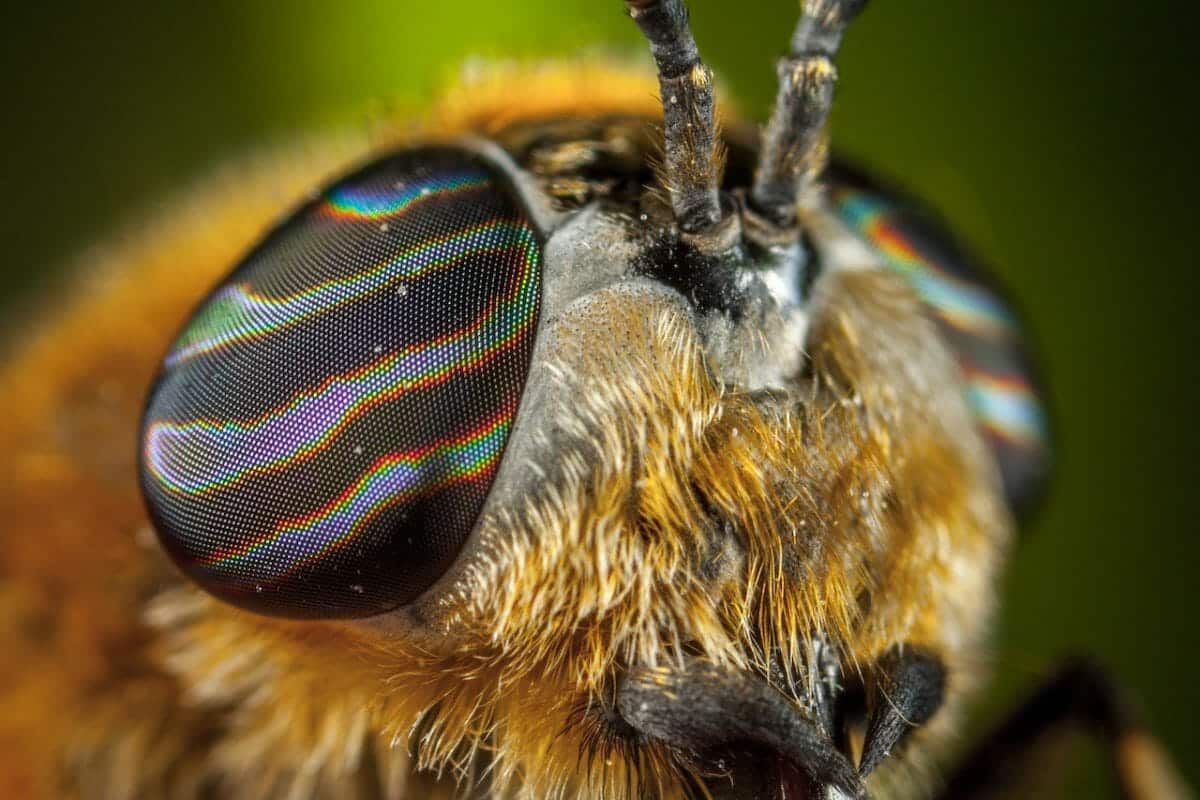Home>Gardening News and Trends>Latest News>How Do Insects Obtain Food
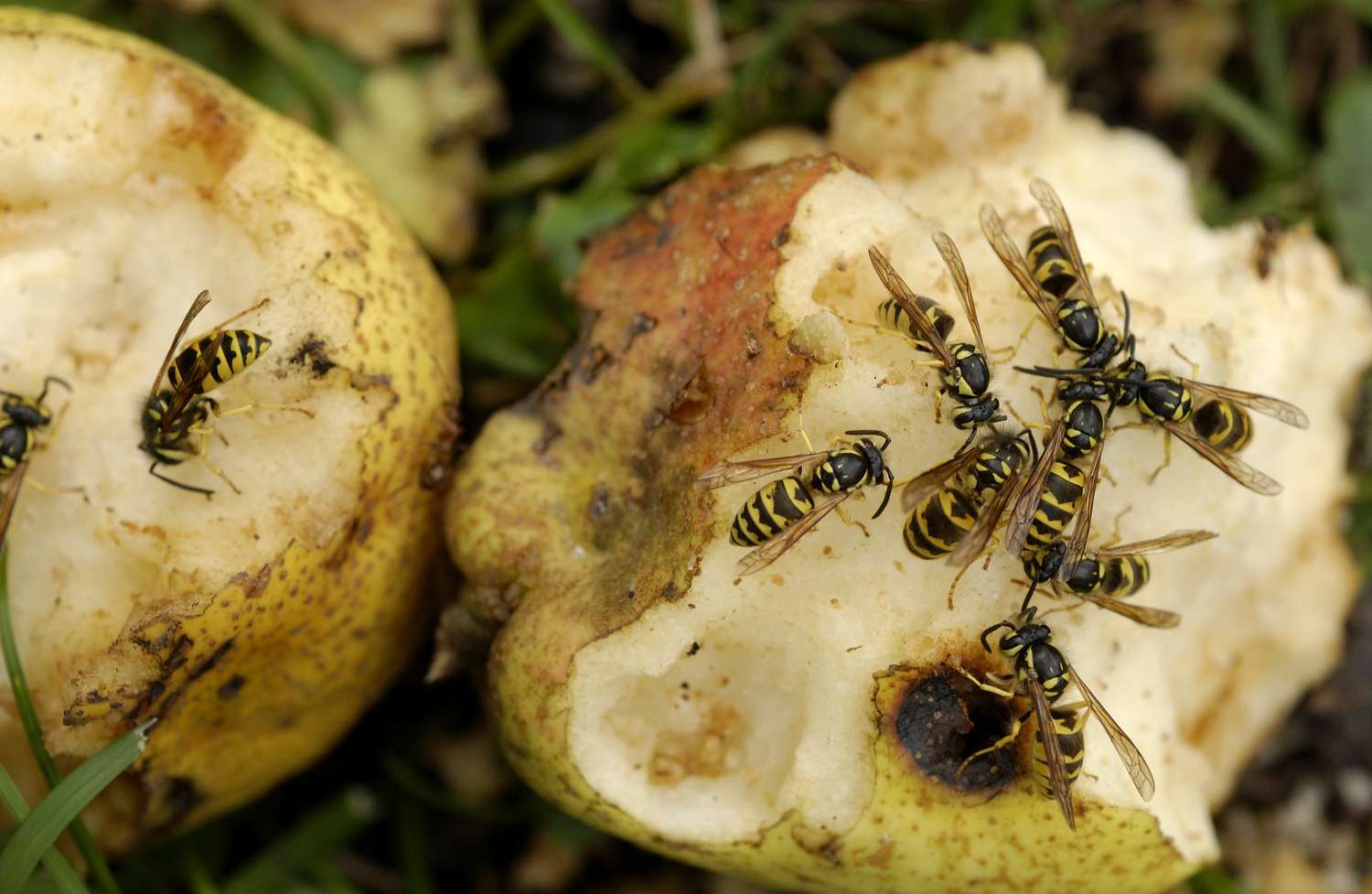

Latest News
How Do Insects Obtain Food
Modified: January 22, 2024
Discover the Latest News on How Insects Obtain Food. Explore their fascinating feeding strategies and adaptations. Stay informed with our up-to-date articles and insights.
(Many of the links in this article redirect to a specific reviewed product. Your purchase of these products through affiliate links helps to generate commission for Chicagolandgardening.com, at no extra cost. Learn more)
Table of Contents
Introduction
Insects are incredibly diverse creatures that inhabit every corner of our planet. With over a million known species, they have evolved a wide range of adaptations to help them survive and thrive in various environments. One of the key aspects of an insect’s survival is obtaining food. Insects have developed remarkable morphological adaptations and feeding mechanisms that enable them to obtain nutrients from different food sources.
Feeding strategies in insects can vary significantly, as different species have specialized diets. Some insects are herbivorous, feeding primarily on plants and their parts. Others are carnivorous, preying on other insects or smaller animals. There are also omnivorous insects that consume both plant material and prey. In addition, insects can form symbiotic relationships with other organisms to obtain nutrients.
Understanding how insects obtain their food is not only fascinating but also has practical implications. Insects play crucial roles in ecosystems as pollinators, decomposers, and as a food source for other animals. They also impact agriculture, as some species can be pests that damage crops, while others are beneficial predators that control pest populations.
In this article, we will explore the morphological adaptations that insects possess for feeding, the different types of mouthparts they have, the various feeding mechanisms they employ, and the diets of herbivorous, carnivorous, and omnivorous insects. We will also delve into the intriguing world of symbiotic relationships and how they contribute to insect feeding strategies. By the end, you will gain a deeper appreciation for the incredible diversity and complexity of insect feeding strategies.
Morphological Adaptations for Feeding
Insects have evolved a remarkable array of morphological adaptations to facilitate their feeding. These adaptations are specialized structures that enable insects to access and manipulate various food sources efficiently. Here are some of the key morphological adaptations that aid in insect feeding:
- Mouthparts: One of the most notable adaptations in insects is the diversity of their mouthparts. Different species have mouthparts that are modified for specific feeding behaviors. These mouthparts can be adapted for piercing and sucking, chewing, sponging, or siphoning. The versatility of mouthpart structures allows insects to exploit a wide range of food sources.
- Proboscis: Many insects, such as butterflies and moths, have a proboscis, which is a long, tubular mouthpart used for feeding on flower nectar or other liquid substances. The proboscis can be coiled when not in use and extended to reach deep into flowers to access nectar or other fluids.
- Maxillae and Mandibles: These are mouthpart structures responsible for chewing and grinding food. Insects with chewing mouthparts, such as grasshoppers and beetles, have strong mandibles and maxillae that enable them to break down plant material or consume other insects.
- Rostrum: Insects like bugs and aphids possess a modified mouthpart called a rostrum, which is a needle-like structure used for piercing and sucking fluids from plants. The rostrum allows these insects to access the sap of their host plants or prey on other insects by injecting digestive enzymes and sucking out the liquefied tissues.
- Pollen Collecting Structures: Bees and other pollinating insects have specialized body structures, such as pollen baskets or specialized hairs, that allow them to collect and transport pollen from flowers. These adaptations help ensure the pollination process while providing the insect with a nutritious food source.
These morphological adaptations for feeding highlight the incredible diversity of insect anatomy and the specific adaptations that enable them to exploit various food sources. By having specialized mouthparts and other structures, insects have evolved to occupy diverse ecological niches and play critical roles in the ecosystem.
Mouthparts of Insects
The mouthparts of insects are incredibly diverse and are a key morphological adaptation that allows them to feed on a wide range of food sources. The structure and functionality of insect mouthparts can vary greatly depending on the species and their specific feeding behaviors. Here, we will explore the different types of mouthparts found in insects and their functions:
- Chewing mouthparts: Insects with chewing mouthparts, such as beetles, grasshoppers, and caterpillars, have strong and robust mandibles and maxillae. These mouthparts are designed for cutting, grinding, and chewing solid food material, such as leaves, stems, and other plant parts. The mandibles move horizontally or vertically to tear apart plant tissues, allowing the insect to consume plant matter efficiently.
- Piercing-sucking mouthparts: Insects like mosquitoes, aphids, and bedbugs have mouthparts adapted for piercing and sucking fluids. They possess elongated, tubular mouthparts known as a proboscis or stylet. The proboscis is used to pierce through the skin of plants or animals to access fluids, such as plant sap or blood. These mouthparts are flexible and can be inserted into the host to extract nutrients.
- Sponging mouthparts: Certain insects, such as flies and butterflies, have sponge-like mouthparts called labellum. These mouthparts are modified for sponging up liquid substances, such as nectar, water, or other liquid food sources. The labellum is covered with tiny, hair-like structures that can absorb fluids.
- Siphoning mouthparts: Some insects, like moths and butterflies, possess siphoning mouthparts known as a proboscis. The proboscis is a long, flexible tube that can be coiled when not in use and extended to access nectar or other liquid food sources. The proboscis is inserted into flowers or other liquid sources to suck up the nutritious fluids.
The diversity of mouthparts in insects is a testament to their adaptability and specialization for different feeding behaviors. These mouthparts have evolved over time to exploit specific food sources, allowing insects to thrive in various ecosystems. Whether it’s chewing, piercing, sponging, or siphoning, the mouthparts of insects are incredibly well-suited to their respective feeding strategies. Understanding these adaptations provides valuable insights into the ecological roles and behaviors of different insect species.
Feeding Mechanisms
Insects have evolved a diverse range of feeding mechanisms to obtain nutrients from their chosen food sources. These feeding mechanisms are specialized behaviors and adaptations that enable insects to capture, process, and consume their food effectively. Here, we will explore some of the common feeding mechanisms employed by insects:
- Biting and chewing: Many insects, such as beetles, grasshoppers, and caterpillars, employ a biting and chewing mechanism to feed on solid food. They use their specialized mouthparts, including mandibles and maxillae, to tear and grind plant material. This mechanism allows them to consume leaves, stems, or other plant parts.
- Sucking: Insects with piercing-sucking mouthparts, like mosquitoes and aphids, feed by piercing the skin of plants or animals and sucking fluids. They extract sap, nectar, blood, or other liquid substances from their hosts. The sucking mechanism allows them to obtain nutrients in a convenient and efficient manner.
- Lapping and sponging: Some insects, such as flies and butterflies, have mouthparts designed for lapping and sponging. They use structures like labellum or sponge-like mouthparts to absorb liquid substances, such as nectar or water, from various sources. This mechanism enables them to feed on readily available fluids.
- Stabbing and sucking: Certain predatory insects, like assassin bugs and robber flies, employ a stabbing and sucking mechanism. They use their sharp mouthparts to pierce their prey, inject digestive enzymes, and then suck the liquefied tissues. This mechanism allows them to feed on other insects or small animals.
- Filter-feeding: Many aquatic insects, such as mayflies and caddisflies, are filter-feeders. They use specialized structures, like feathery gills or hairy appendages, to filter out tiny particles of organic matter or plankton from the water. This mechanism allows them to feed on suspended food sources in their aquatic habitats.
The diversity of feeding mechanisms in insects reflects their ability to adapt to different food sources and lifestyles. These mechanisms have evolved through millions of years, leading to extraordinary abilities to exploit and utilize specific resources. By employing various feeding mechanisms, insects have developed successful strategies for obtaining the necessary nutrients to survive and reproduce in their respective habitats.
Herbivorous Insects
Herbivorous insects are a diverse group of insects that primarily feed on plants and plant materials. They have evolved specialized adaptations to consume and digest plant tissues, allowing them to exploit this abundant food source. Here are some key characteristics and examples of herbivorous insects:
- Morphological adaptations: Herbivorous insects often have mouthparts adapted for chewing or piercing plants. The chewing mouthparts of herbivorous insects like grasshoppers and beetles are equipped with strong mandibles and maxillae that allow them to consume leaves and other plant parts. On the other hand, insects like aphids and leafhoppers have piercing-sucking mouthparts that allow them to access the sap of plants.
- Dietary preferences: Herbivorous insects exhibit a wide range of dietary preferences within the plant kingdom. Some insects specialize in feeding on specific plant species or families, while others are generalists that feed on a variety of plants. Some herbivorous insects, like leaf miners, feed on the leaves from the inside, while others consume flowers, fruits, or plant seeds.
- Plant interactions: Herbivorous insects can have significant impacts on plant populations and ecosystems. Some herbivorous insects act as pests, causing damage to agricultural crops or garden plants. They may defoliate plants, stunt growth, or transmit plant diseases. Conversely, other herbivorous insects play important roles as pollinators, facilitating the reproduction of the plants they feed on.
- Co-evolution: The relationships between herbivorous insects and plants have led to fascinating co-evolutionary adaptations. Plants have developed defense mechanisms, such as thorns, spines, or toxic compounds, to deter herbivorous insects. In turn, some herbivorous insects have evolved mechanisms to overcome plant defenses, like detoxifying chemicals or specialized mouthparts to access the plant’s nutrients.
Instances of herbivorous insects are abundant in nearly every habitat on Earth. From leaf-chewing beetles to sap-sucking aphids, these insects play important roles in energy transfer and nutrient cycling within ecosystems. Their interactions with plants influence plant community dynamics and are essential for maintaining biodiversity. Understanding the biology and ecology of herbivorous insects is crucial for managing pest populations, conserving plant diversity, and ensuring the health of ecosystems.
Carnivorous Insects
Carnivorous insects are specialized predators that obtain their food by hunting and feeding on other insects or small animals. With diverse hunting strategies and adaptations, these insects have evolved to be efficient predators. Here are some key characteristics and examples of carnivorous insects:
- Hunting strategies: Carnivorous insects employ various hunting strategies to capture their prey. Some insects, like dragonflies and robber flies, are active hunters, chasing down their prey in flight. Others, like mantises and assassin bugs, use stealth and camouflage to ambush their unsuspecting prey. Some carnivorous insects, such as ant lions, build pit traps to capture ground-dwelling insects.
- Morphological adaptations: Carnivorous insects often possess specialized mouthparts and limbs for capturing and immobilizing their prey. For example, praying mantises have powerful forelegs that they use to grasp and hold their prey securely. Predatory beetles, such as ground beetles, have strong mandibles for seizing and dismembering their prey.
- Dietary preferences: Carnivorous insects have a wide range of dietary preferences, feeding on other insects, spiders, small arthropods, or even small vertebrates. Some carnivorous insects are specialized predators that target specific prey, while others are more generalist predators that feed on a variety of prey items.
- Ecological importance: Carnivorous insects play a significant role in regulating insect populations and maintaining ecological balance. They help control pest populations by preying on insects that can damage crops or transmit diseases. Carnivorous insects also contribute to nutrient cycling by recycling the energy stored in their prey back into the ecosystem.
Carnivorous insects exhibit remarkable predatory behaviors and adaptations that have evolved over millions of years. Their role as predators helps to maintain the structure and functioning of ecosystems. By controlling prey populations, keeping pest numbers in check, and participating in energy flow, carnivorous insects contribute to the overall health and balance of natural communities.
Omnivorous Insects
Omnivorous insects are unique in their ability to consume both plant material and animal matter. This dietary flexibility allows them to adapt to a wide range of food sources and habitats. Here, we explore the characteristics and examples of omnivorous insects:
- Dietary versatility: Omnivorous insects have the advantage of being able to consume both plant and animal matter. They often feed on a combination of fruits, flowers, leaves, nectar, insects, and decaying organic matter. This adaptability to different food sources allows them to survive and thrive in diverse environments.
- Morphological adaptations: Omnivorous insects may have a mix of mouthpart structures that allow them to consume both plant and animal matter. For example, they may have chewing mouthparts to consume plant material and modified mouthparts like proboscis or piercing-sucking mouthparts to feed on liquids or prey on insects.
- Diet composition: The proportions of plant and animal matter consumed by omnivorous insects can vary depending on factors such as availability and seasonality. Some omnivorous insects have a preference for certain types of food, while others exhibit a more balanced diet, consuming plant and animal matter in equal proportions.
- Ecological role: Omnivorous insects play important ecological roles in ecosystems. They can act as pollinators while feeding on nectar, dispersing pollen between plants in the process. Omnivorous insects also contribute to nutrient cycling by consuming decaying organic matter, recycling nutrients back into the ecosystem.
- Examples of omnivorous insects: Many species of beetles, ants, bees, wasps, and even some caterpillars exhibit an omnivorous diet. For instance, certain species of ants scavenge for both dead insects and sugary substances, while some beetles feed on both plant matter and insects for their nutritional requirements.
The ability of omnivorous insects to feed on a wide range of food sources demonstrates their adaptability and resilience in various habitats. They can occupy different ecological niches, taking advantage of the available resources. The dietary versatility of omnivorous insects contributes to the overall ecological balance and functioning of ecosystems.
Symbiotic Relationships in Insect Feeding
Symbiotic relationships play a significant role in the feeding strategies of many insects. These relationships involve interactions between species, where both parties benefit from the association. Here, we explore some examples of symbiotic relationships in insect feeding:
- Pollination: One of the most well-known symbiotic relationships involving insects is pollination. Insects, such as bees, butterflies, and flies, visit flowers to feed on nectar. As they collect nectar, they inadvertently transfer pollen from the male reproductive structures of one flower to the female reproductive structures of another, facilitating cross-pollination. In return for their feeding, insects receive a nutritious food source while aiding in plant reproduction.
- Ant-plant mutualism: Some plant species have specialized structures called extrafloral nectaries (EFNs) that produce sugary secretions outside of their flowers. These EFNs attract ants, which feed on the nectar. In return, the ants provide protection for the plant by attacking herbivores and removing competing plants, ensuring the survival and health of the host plant.
- Leafcutter ants and fungi: Leafcutter ants have a fascinating symbiotic relationship with a specific fungus. These ants cut pieces of leaves and use them to cultivate the fungus in their underground gardens. The ants feed on the fungus, which in turn breaks down the leaves, making them more digestible for the ants. This mutualistic relationship ensures a constant supply of nourishment for both the ants and the fungus.
- Carnivorous plants and insects: Certain plants, such as pitcher plants and sundews, have evolved unique adaptations to attract and consume insects. These plants have specialized structures that secrete sticky substances or produce enticing scents to attract insects. Once an insect lands on the plant, it becomes trapped and is slowly digested by the plant’s enzymes, providing the plant with additional nutrients.
- Parasitic wasps and host insects: Parasitic wasps lay their eggs inside or on other insects. When the wasp larvae hatch, they feed on the host, eventually killing it. This provides a source of food and nutrients for the developing wasp larvae. This parasitic relationship benefits the wasps by ensuring the survival and development of their offspring.
Symbiotic relationships in insect feeding demonstrate the interconnectedness and interdependence of species in ecosystems. Through these interactions, insects have developed unique and specialized feeding strategies that allow them to thrive and survive. These symbiotic interactions not only shape the feeding behaviors of insects but also have significant ecological implications, influencing plant reproduction, nutrient cycling, pest control, and overall ecosystem dynamics.
Conclusion
Insects have evolved remarkable adaptations and feeding strategies to obtain food from a wide range of sources. The morphological adaptations, such as specialized mouthparts, enable insects to exploit specific food sources effectively. Herbivorous insects have evolved to consume plant materials, while carnivorous insects have become skilled predators, feeding on other insects or small animals. Additionally, omnivorous insects demonstrate remarkable dietary versatility, consuming both plant and animal matter.
The diverse feeding mechanisms employed by insects highlight their remarkable ability to adapt to different ecological niches. Biting, chewing, sucking, lapping, and sponging are all strategies used by insects to feed on their chosen food sources. These feeding mechanisms ensure that insects are able to efficiently consume the nutrients they need for survival and reproduction.
Symbiotic relationships in insect feeding further showcase the intricate connections between species in ecosystems. From pollination partnerships to ant-plant mutualism and carnivorous plant-insect interactions, symbiotic relationships play a crucial role in the feeding strategies and ecological roles of insects.
Understanding how insects obtain their food is not only fascinating but also essential for comprehending their ecological roles and impacts on the environment. By studying the feeding adaptations of insects, we can gain valuable insights into the delicate balance of ecosystems and the complex web of interactions between species.
In conclusion, the incredible diversity and adaptability of insect feeding strategies are a testament to the power of evolution and natural selection. These feeding strategies have allowed insects to occupy various niches, contribute to ecosystem functioning, and play critical roles in plant reproduction, nutrient cycling, and pest control. Exploring the fascinating world of insect feeding not only deepens our understanding of these incredible creatures but also highlights the interconnectedness and marvels of the natural world.
